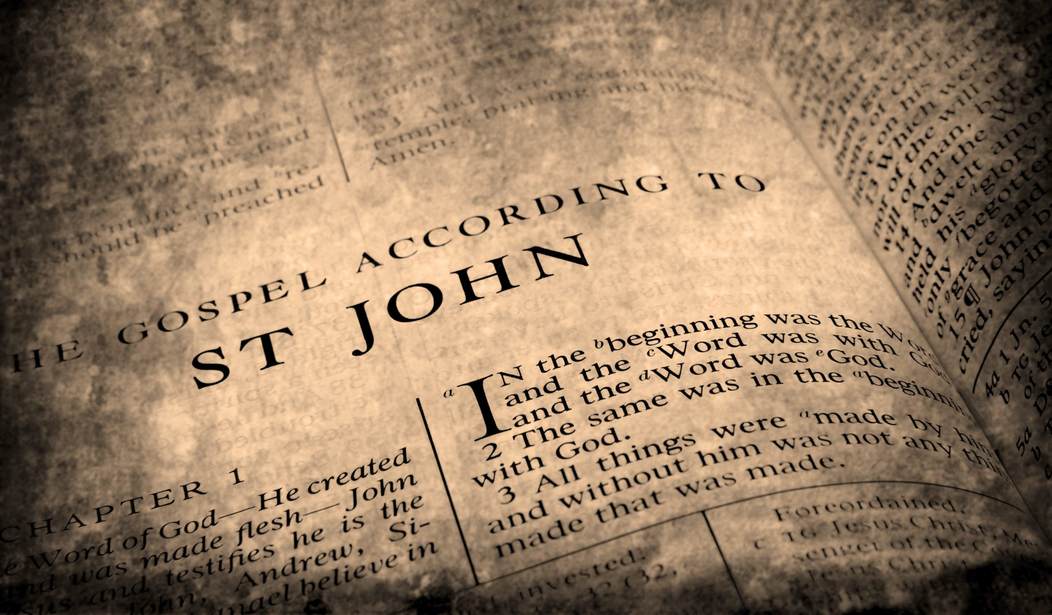You’ve seen the passage played out in numerous “Jesus” movies. You’ve heard the famous lines from John 7:53-8:11: “He who is without sin among you, let him throw a stone at her first,” and “Neither do I condemn you, go and sin no more.” But is the story an authentic part of the Gospel of John as it was written in the first century? (The earliest manuscript of the Gospel of John, known as “p52,” dates to AD 120. Found in Egypt, it confirms that the Gospel of John was written before the end of the first century.)
When I read modern translations (such as the New International Version or the New American Standard Version) there are often brackets around John 7:53-8:11, usually accompanied with a footnote that says that the “earliest and best manuscripts” do not contain these verses. But is that true?
It is true that this story is missing from every Greek manuscript of the New Testament up to the fifth century AD. And some manuscripts later on put the story in Luke’s Gospel rather than in John’s. The first Greek manuscript that contains the passage is Codex Alexandrinus from about AD 400. However, after this time some 900 Greek manuscripts of the Gospel of John all contain it! It is difficult to just outright dismiss this hard external evidence. The Old Latin manuscripts from the second century usually have this story in the Gospel of John, thus confirming that John 7:53-8:11 was known by Christians and cherished as a true account going all the way back to the first century.
Other translations, such as Jerome’s Vulgate (late fourth century Latin translation), Ethiopic and Palestinian Syriac manuscripts, as well as Harclean Syriac, Armenian, and Coptic versions, all contain the story as we know it. Most of the external evidence for inclusion of the story in the Gospel of John comes from the early Latin, Coptic, and Syriac translations.
Some of the early Christian theologians quoted this story in their writings: both the Second Epistle of Callistus (AD 217), and the Constitutions of the Apostles (the first versions of which survive as the Didascalia, dated to AD 250 — some 150 years before the Vulgate and later the Codex Bezae record the passage) quote the story of Jesus forgiving the adulterous woman.
Ambrose of Milan (337-397) comments on this passage as Scripture some nine times in his writings. Jerome (347-420) included the passage in his Latin Vulgate. He wrote this about the story: “. . . in the Gospel according to John in many manuscripts, both Greek and Latin, is found the story of the adulterous woman who was accused before the Lord.”
Saint Augustine of Hippo (354-430) quoted it twice as much as Jerome. He also knew that some manuscripts did not contain it. Here is his comment: “. . . certain persons of little faith, or rather enemies of the true faith, fearing, I suppose, lest their wives should be given impunity in sinning, removed from their manuscripts the Lord’s act of forgiveness toward the adulteress, as if He who had said, ‘sin no more’ had granted permission to sin.”
In the year 397 Ambrose explained that the story was controversial because it seemingly excused adultery. Other ancient church leaders quote the story as authentic: Eusebius (AD 260-340), Pacian (AD 310-391), Rufinus (AD 340-410), Vigilius (AD 400-484), and Gelasius (died AD 496).
Some say the story is not original with John’s Gospel because the vocabulary does not fit John’s writing style. However, if the same standards for internal evidence are applied to other ancient authors, one could prove that (for example) Cicero did not write the letters of Cicero.
Every author’s vocabulary varies with his emotions, subject matter and purpose. Compare an undisputed passage such as John 2:13-17, which has even more unique words in it than John 7:53-8:11! But no one questions anything in John 2. Even though John 2 has only 73 words in the Greek text, it had more unique words than John 7:53-8:11! It also has more words unique to Matthew, Mark, and Luke than the passage in question in John 8. So, I think arguing against inclusion of the passage based on internal evidence is a fairly weak line of reasoning. (For more information on the internal evidence, please see A. Johnson’s “A Stylistic Trait of the Fourth Gospel,” Journal of the Evangelical Theological Society 9 (1966), p 93.)
There is more than enough compelling evidence from the New Testament manuscripts as well from the writings of ancient Christian leaders to conclude that this story is ancient, authentic, and consistent with the character of Jesus. Early in its history it was accepted into the canon of Scripture by Christians and has been cherished by the whole church as a true story that authentically reveals Jesus Christ.









Join the conversation as a VIP Member